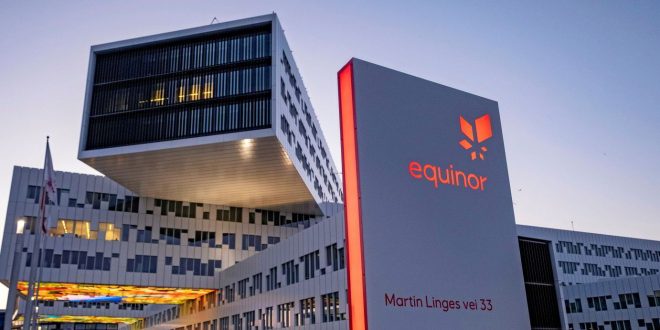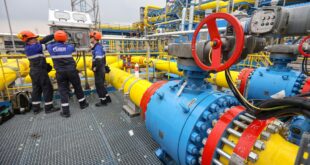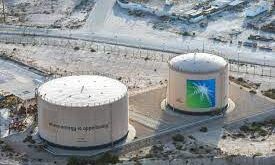Norway’s state-controlled energy company Equinor is confident there is a long-term role for hydrogen produced from fossil fuels with carbon capture and storage, the company’s senior vice president for low-carbon solutions Grete Tveit told S&P Global Platts.
The development of “blue” hydrogen from fossil fuels with CCS would pave the way for green hydrogen production from renewable energy, and while future supply would likely be entirely green, there was still plenty of room for blue hydrogen in a 2050 net-zero CO2 scenario, Tveit said in an interview.
“If I’m investing in blue hydrogen facilities that can last for 30 or 40 years, then I’m happy,” Tveit said July 8.
Equinor is spearheading several blue hydrogen projects across Europe, but is also developing green hydrogen projects in parallel.
“We don’t see them as competing because we really think we need both as soon as possible, and as much as possible,” Tveit said.
The company is part of a consortium developing the NortH2 renewable hydrogen project, powered by 4-GW of offshore wind in the Netherlands by 2030. However, blue hydrogen would be the dominant low-carbon hydrogen pathway in the next decade, she added.
“Most of the other green projects are in the megawatt scale,” she said. “What we need is gigawatt, and we need many gigawatts. That’s why I believe blue is important.”
And while the company aims to become a global offshore wind energy major, the scale of its plans in the hydrogen space could be similarly ambitious. It aims to be a large-scale hydrogen producer in three to five industrial clusters by 2035, which Tveit said could account for 10% of European low-carbon production.
Humber decarbonization cluster
The company said at the end of June it was expanding its blue hydrogen plans in the UK, adding 1.2 GW of capacity in the Humber region on top of the 600-MW H2H Saltend project.
Much of the production will feed the Keadby hydrogen power station, which Equinor is developing with utility SSE Thermal. Equinor said it could deliver with its partners over half of the UK’s 5 GW low-carbon hydrogen goal by 2030.
Tveit said the large industrial customers for blue hydrogen in the Humber region would be adding to the hydrogen demand pool, rather than replacing existing conventional hydrogen, as the area sought to decarbonize completely by 2040.
Equinor is also developing the H2morrow blue hydrogen project in Germany with Open Grid Europe and Thyssenkrupp to supply the country’s largest steelworks, in Duisburg. In the Netherlands, it is working with Vattenfall and Gasunie to convert Vattenfall’s Magnum gas-fired power plant in the Netherlands to run on hydrogen. And the company has partnered with Engie to develop low-carbon hydrogen value chains in Belgium, the Netherlands and France.
Funding support needed
Tveit said that while blue hydrogen had a price advantage over green, and both would become more competitive as costs fell and carbon prices rose, state support was still needed.
“As it is right now, we need funding support, and so does the customer buying the hydrogen.”
Platts assessed the cost of hydrogen production by steam methane reforming from natural gas at Eur2.66/kg ($3.15/kg) July 8 (Netherlands, including carbon, CCS and capex), while hydrogen from unabated fossil fuels was assessed at Eur2.25/kg.
By contrast, renewable hydrogen via alkaline electrolysis in Europe was almost double the cost, at Eur4.96/kg (including capex), with PEM electrolysis production at Eur6.18/kg.
The UK government had gone a good job in consulting and supporting the industry, she said, which was why Equinor had progressed blue hydrogen projects the furthest there.
Asked if blue hydrogen developments were critical to ensuring natural gas remained a viable commodity in the energy transition, Tveit said that was not the primary motivation for Equinor’s investments in the sector.
Equinor does not anticipate a complete divestment from fossil fuels any time soon, and Tveit saw a market for natural gas “way into the future.”
Rather, the move into blue hydrogen was a way for Equinor to decarbonize its own operations to meet its aim of becoming a net-zero CO2 emission company by 2050, she said.
“If we then still have oil and gas production, we need to decarbonize our products.”
Equinor is also investigating converting natural gas pipelines in Norway to ship hydrogen to continental Europe and possibly the UK.
“If we can reuse them, then, of course, that is a lot of savings,” Tveit said.
Northern Lights
Tveit, who’s department covers both blue hydrogen and CCS projects at Equinor, while renewable hydrogen sits within the company’s renewable power division, also chairs the board of directors at the North Sea Northern Lights CCS project, a consortium with Shell and TotalEnergies.
The subsea storage site offshore Norway will have an initial capacity of 1.5 million mt/year when it comes online in 2024, with plans to expand to 5 million mt/year.
Commercial interest in the project accelerated after the consortium made a final investment decision in May 2020, Tveit said.
European carbon prices of Eur90-110/mt were needed to make CCS economically competitive, she added.
Around 400,000 mt/year of the capacity has been contracted by one customer, with a further 400,000 mt/year reserved for a second customer.
Equinor aims to have “a CCS transport and storage capacity of 15 million to 30 million mt/year by 2035,” accounting for around 25% of European CCS. “We are looking at additional stores, primarily in the North Sea, both in UK and in Norway,” she said.

 Iran Energy News Oil, Gas, Petrochemical and Energy Field Specialized Channel
Iran Energy News Oil, Gas, Petrochemical and Energy Field Specialized Channel



